| |
Home
Famous and Fascinating Women in History
Frontiersmen and Women
The World's Greatest Composers
Famous Women Spies
Great Authors of the World
Generals and other Noteworthy People
from the Civil War
The Presidents of the United States
The First Ladies of the United States
Homes and Monuments of and to
Famous People
Historical People and Events by Month for Each Day of the Year!
Famous Figures in Black History
The Calvert Family and the Lords Baltimore
Understanding the American Revolution and its People
Everything Beatles!
Everything Maryland! |
| |
|
 |
 |
 |  | 
William Henry
Harrison, Anna Harrison,
&
Berkeley
Plantation
By John T. Marck
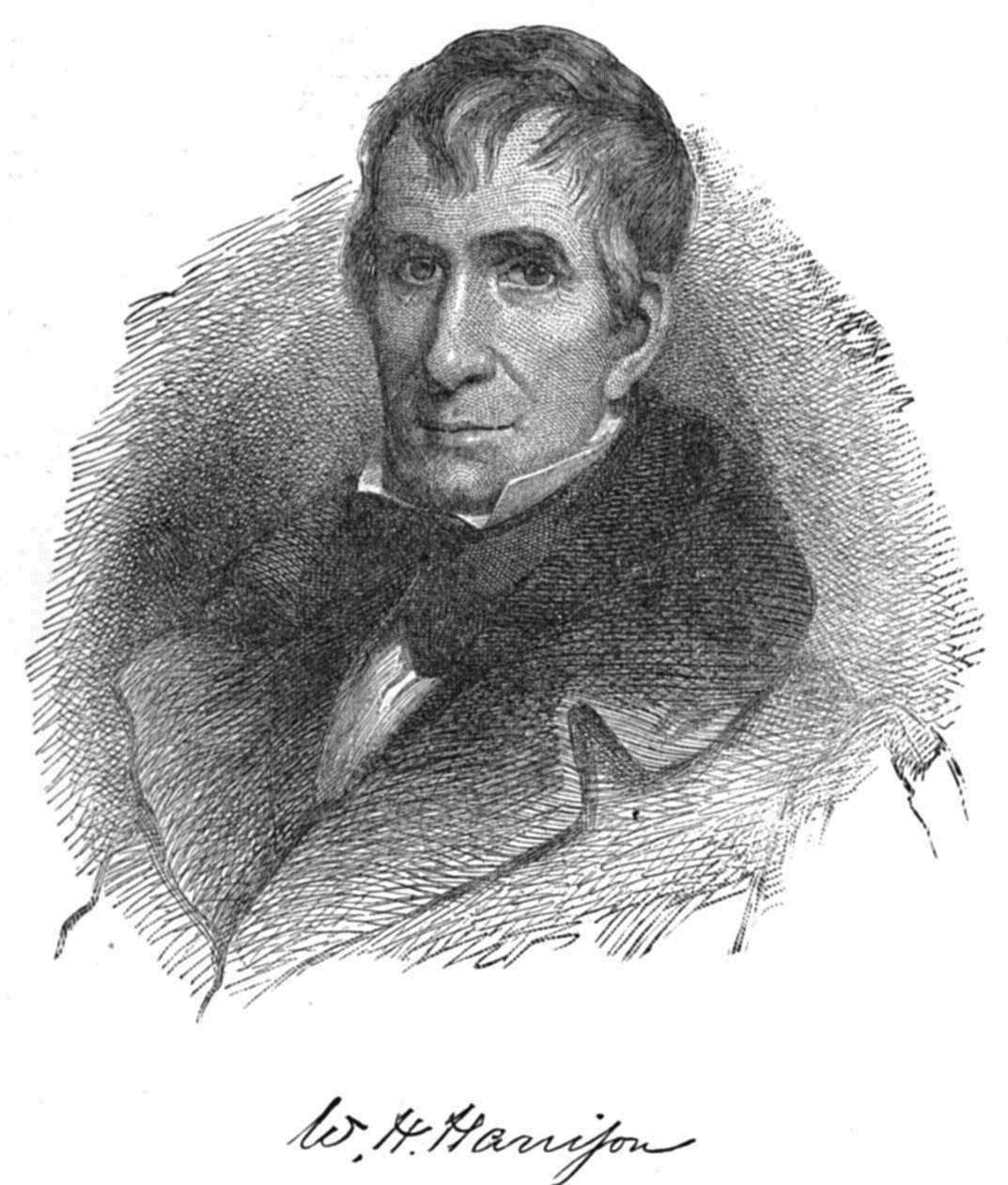
Berkeley Plantation began its historic legacy on December 4, 1619,
when 38 early settlers from England came ashore at Berkeley,
established a colony and observed the first official Thanksgiving in
America. It has been the ancestral home of the Harrison's;
it is the birthplace of two Presidents of the United States, two
governors of Virginia, and a signer of the Declaration of
Independence. Establishing a settlement called the Berkeley Company,
this first colony did not last long, when in 1622 it fell victim to a
bloody Indian massacre. From 1621 to 1622 the first bourbon whiskey
was distilled here in America (below).
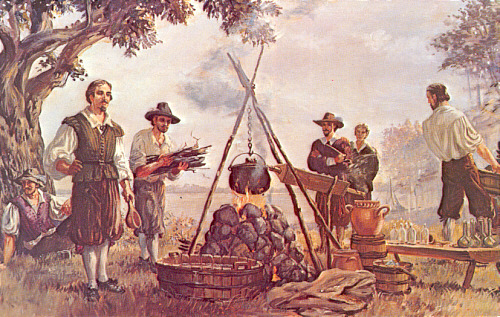
In 1691,
Berkeley Plantation was acquired by the Harrison 's,
who enlarged Berkeley to include a shipyard and a tobacco warehouse.
Beautifully situated overlooking the James River, the original
Georgian mansion that was to become the base for a commercial and
agricultural empire, was built in 1726 by Benjamin Harrison IV, of
brick fired on the plantation.
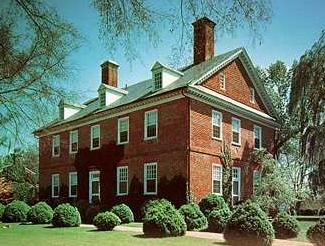
At Berkeley the
date of the building, 1726, and the initials of the owners, Benjamin
Harrison IV and his wife, Anne, appear in a date stone over a side
door. The early Georgian mansion is said to be the oldest three-story
brick house in Virginia that can prove its date and the first with a
pediment roof. Berkeley's ten acres of formal terraced boxwood gardens
and lawn extend a quarter-mile from the front door to the James River.
In the basement, the original hand-hewn floor joists are visible. The
basement also displays models of early plantation buildings.
To understand
the succession of Harrison family, Benjamin Harrison, the son of the
builder of Berkeley (who was Benjamin Harrison IV) and the
plantation's second owner, was a signer of the Declaration of
Independence and three-time Governor of Virginia and the father of
William Henry.
William Henry
Harrison, Benjamin's third son, born at Berkeley, was the famous
Indian fighter known as "Tippecanoe," who later became the ninth
President of the United States, in 1841. His grandson, Benjamin
Harrison, was the twenty-third President.
The handsome
Adam woodwork and the double arches of the "Great Rooms" in the
mansion were installed by Benjamin Harrison VI in 1790 at the
direction of Thomas Jefferson. The rooms in Berkeley are furnished
with a magnificent collection of eighteenth century antiques. Visitors
may see the bedroom in which William was born, as well as the desk on
which he wrote his inaugural address.

Berkeley Entrance
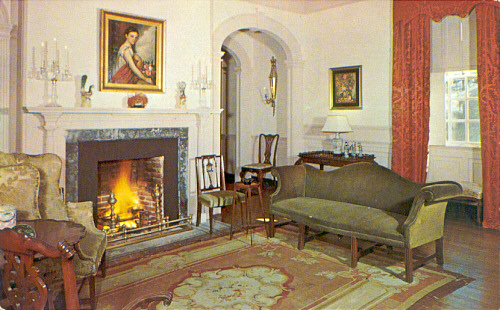
Berkeley Great Room
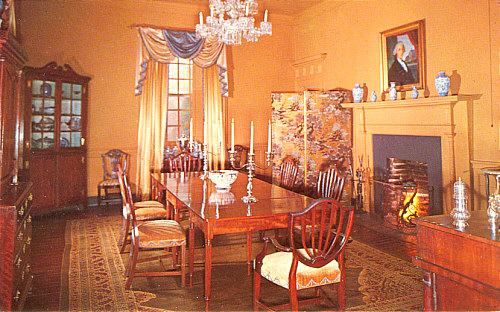
Berkeley Dining Room
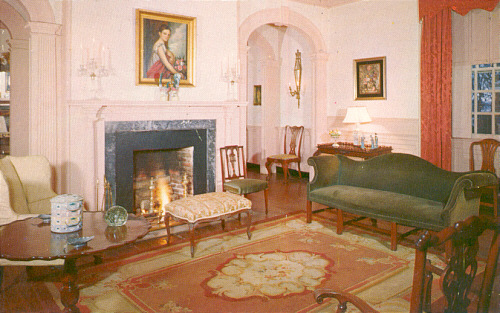
Berkeley Drawing Room
By the middle of
the 19th century, financial problems caused the Harrison 's
to lose Berkeley. During the Civil war it was the headquarters of
General George McClellan and the Army of the Potomac. It was during a
bivouac there that McClellan's
aide, General Daniel Butterfield, composed "Taps,"
and played for the first time by company bugler O.W. Norton. There is
a commemorative plaque at Berkeley that marks this historic event.
After the Civil War, the condition of Berkeley Mansion declined until
1907 when it was purchased by John Jamieson, a Scottish-born man who
had served as McClellan's
drummer boy. In 1927, Jamieson's
son, Malcolm, and his wife, Grace, inherited Berkeley. They restored
the plantation mansion to its original splendor as it was in the days
of the Harrison's.
George Washington, and later the succeeding nine Presidents of the
United States, all enjoyed the famous hospitality of Berkeley in the
dining room with its view of the James River.
Good
Housekeeping magazine suggests: "If you only have time for one
plantation, Berkeley should be at the top of your list." Says U.S.
Sen. Charles Robb: "If you haven't been to Berkeley, you haven't
lived."
In 1800, when
William Henry was the governor of Indiana territory, he still was
accustomed to quality living such as he experienced at Berkeley.
Consequently, he began construction of a house located in Vincennes,
Indiana, that was similar in appearance to Berkeley, yet in other ways
very different. Since the threat of Indian raids in Indiana was
real, Harrison built the outer walls of his new home 18 inches thick,
and the inside walls and ceilings were reinforced.
Harrison 's
new home was called
"Grouseland,"
(below) and consisted of seventeen rooms, including six in the
basement and ten fireplaces, and was the first brick building in
Vincennes. It was named after the grouse, a bird President Harrison
loved to hunt. His bedroom is decorated with wallpaper featuring
pictures of this bird. The Daughters of American Revolution had this
wallpaper made when restoring the home.

Many rooms were
needed in Harrison 's
time, as he and his wife Anna had ten children together. The
Harrison's
entertained frequently and had an open invitation to all their
neighbors in case of an Indian attack. There is a bullet hole in the
far left window of the dining room where someone shot at William Henry
Harrison while he was holding his son, John Scott. They missed him,
but the bullet hole is still in the window and the bullet was never
found!
The Harrison's
moved from Indiana in 1812 and with them gone Grouseland underwent
many changes of occupancy. Included in its period of disgrace was its
use as a grain storage facility and a lesser hotel around the time the
railroad was built. After the Civil war it again became a
private residence, but was decaying rapidly. Consequently it was
scheduled to be torn down to make room for a water company-settling
tank.
Thanks to the
newly formed, one-year old Francis Vigo Chapter of the Daughters of
the American Revolution, Grouseland was spared. Officially granted
custody over the house, the ladies in 1911 opened the house with some
genuine Harrison items as well as other period pieces. Nearly 100
years later, the house is still maintained by the same Chapter. In
one of the rooms, visitors will find a small museum with displays, war
materials, uniforms, maps and other artifacts of the life and career
of this outstanding military figure, who served as President of the
United States with distinction, but sadly only lived 31 days as
President.
Quick Biographical
Facts:
WILLIAM HENRY HARRISON
9th
President
Term- March 4, 1841 to
April 4, 1841
Whig Party

Birth: "Berkeley
Plantation," Charles City County, Virginia, February 9, 1773.
Ancestry:
English
Marriage: North
Bend, Ohio, November 25, 1795 to Anna Tuthill Symmes, who was born in
Morristown, New Jersey, July 25, 1775. Anna died in North Bend, Ohio,
February 25, 1864 and is buried at William Henry Harrison State Park,
North Bend, Ohio.
Children:
Elizabeth Bassett (1796-1846); John Cleves Symmes (1798-1830); Lucy
Singleton (1800-1826); William Henry (1802-1838); John Scott
(1804-1878); Benjamin (1806-1840); Mary Symmes (1809-1842); Carter
Bassett (1811-1839); Anna Tuthill (1813-1845); James Findlay
(1814-1817).
Home:
Grouseland, Vincennes, Indiana.
Education:
Private tutoring; attended Hampden Sidney College.
Religion:
Episcopalian
Occupation
before Presidency: Soldier, politician.
Military
Service: U.S. Army (1791-1798); Governor of Indiana Territory, (fought
Indians at Tippecanoe, 1811); Major general of Kentucky Militia
(1812); Major general U.S. Army (1812-1814).
Pre-Presidential
Offices: Secretary of Northwest Territory; U.S. Representative and
Senator; Governor of Indiana Territory and Superintendent of Indian
Affairs; Ohio State Senator; Minister of Colombia.
Age at
Inauguration: 68
Harrison
Administration: Vice-President: John Tyler of Virginia, Inauguration,
March 4, 1841, The Capitol, Washington D.C.
Death:
Washington, D.C., April 4, 1841
Cause of Death:
Pleurisy, pneumonia at age 68.
Place of Burial:
William Henry Harrison State Park, North Bend, Ohio.
Interesting
Facts:
Harrison was 68 when he won his short-lived presidency. Only Ronald
Reagan in 1980 was older when elected president. Harrison gave his
long inaugural address outdoors, on a wet winter's day, catching cold,
and one month later dying of pneumonia
Anna Harrison
First Lady: 1841
Born: July 25,
1775 Died: February 25, 1864

Anna Tuthill
Symmes was born in Morristown, New Jersey, on a farm called Solitude.
Anna's mother died when she was three years old, so her maternal
grandparents on Long Island raised her until she was seventeen.
Anna's father, John Cleves Symmes had been appointed a judgeship in
the territorial government and also was in charge of a million acres
of land, known as the Miami Purchase, on the Ohio River, near
Cincinnati. It was this land that was to be divided and sold as
large homesteads. John Symmes chose for himself an area of land
above the Ohio River, near the town of North Bend, and built a
comfortable home made of logs. While this home was being
completed, Anna lived with her sister across the river in Lexington,
Kentucky. It was here at her sister's that she met Lieutenant
William Henry Harrison. Harrison fell in love with Anna, but
Anna=s
father was not in favor of their relationship, as he did not want Anna
to have to live on a soldier's salary. Once Anna settled in
their home in North Bend, Harrison visited often, as he was stationed
sixteen miles away at Cincinnati's Fort Washington. Finally Anna
defied her father's wishes and married Harrison on November 25, 1795.
They first lived in officer's quarters at the fort. Harrison soon
agreed that his soldier's salary did not suffice for a family.
Anna=s
father then gave Harrison a section of land, and they moved into the
house at North Bend. Harrison then began a career in farming and
politics. In 1801, he was sent as Governor to the Indiana
Territory, and moved Anna and their children (they had ten children
during their marriage), by boat to the territorial capital. Once
there, Harrison built a home designed after Berkeley, his birthplace
on the James River. During the War of 1812, Harrison moved his
family back to North Bend, where Anna would spend most of the rest of
her life.
Harrison was elected President in
March 1841 however died in April 1841 having served only 31 days of
his term. Anna never saw Washington, D.C., as she was still in
Ohio upon his election, and was still packing for the trip to the
White House when Harrison died. In later years her farmhouse
burned down, so she moved to an adjoining farm owned by her only
remaining child, John Scott Harrison, father of Benjamin, the
twenty-third President. Anna died here on February 25, 1864.
Copyright © 1992-2022 by
John T. Marck. All Rights Reserved. Grateful appreciation and
informational assistance from the Berkeley Plantation National
Historic Site. Information in part on William Henry Harrison,
Berkeley Plantation, and Grouseland from
Homes
and Libraries of The Presidents,
by William G. Clotworthy, 1994, McDonald & Woodward Publishing,
Blacksburg, Virginia. Quick Biographical Facts from The Presidents of
the United States,
by John T. Marck, Copyright
©
1993, 1997, 2000, 2004. Anna Harrison from The First
Ladies of the United States, by John T. Marck, Copyright ©
1993, 1994, 1995, 1998, 2000, 2004., and 2019.
A
Splendid Time Is Guaranteed For All
| | |
| |

